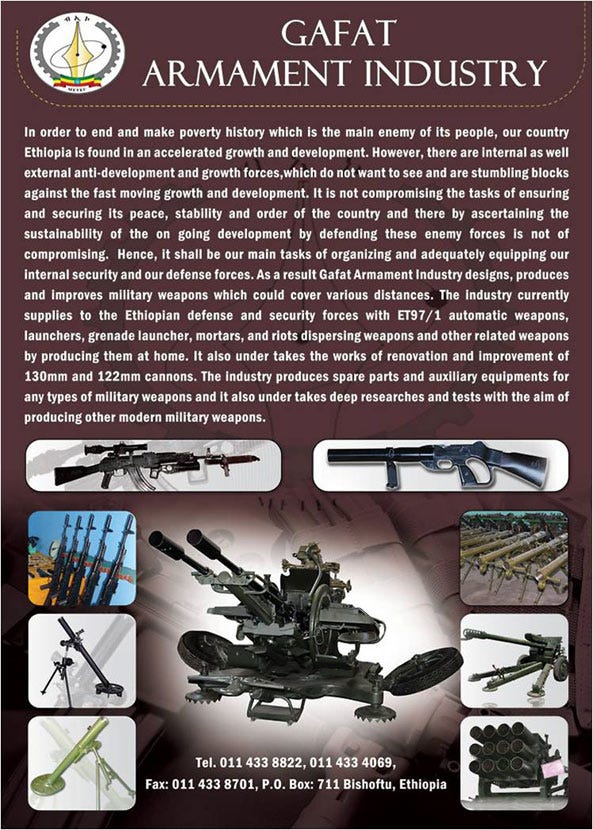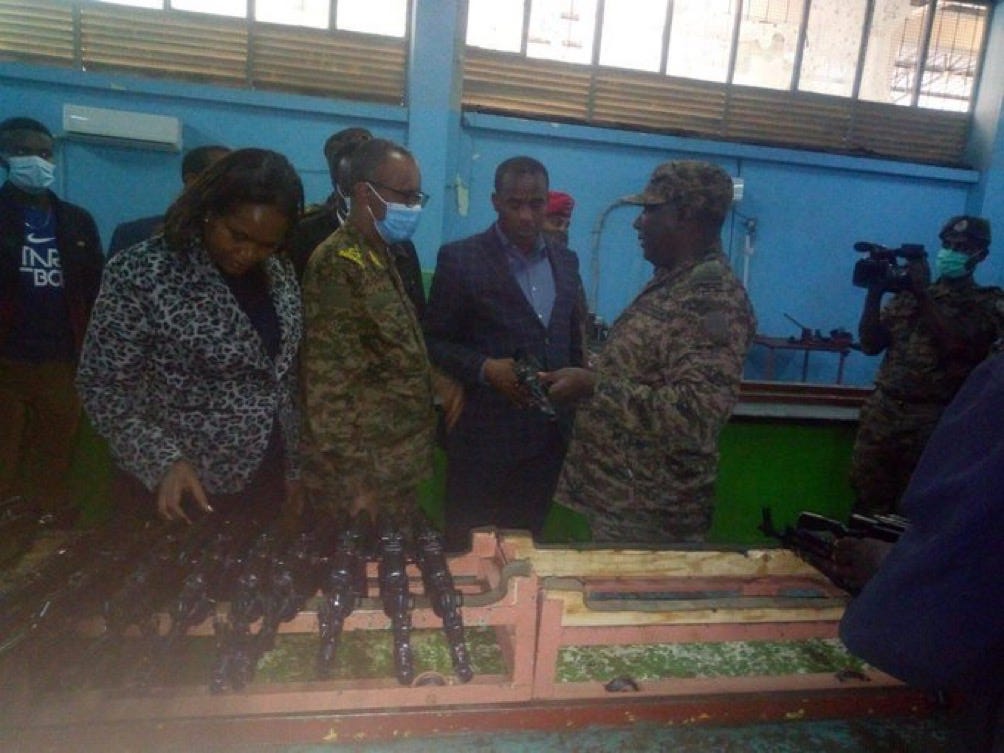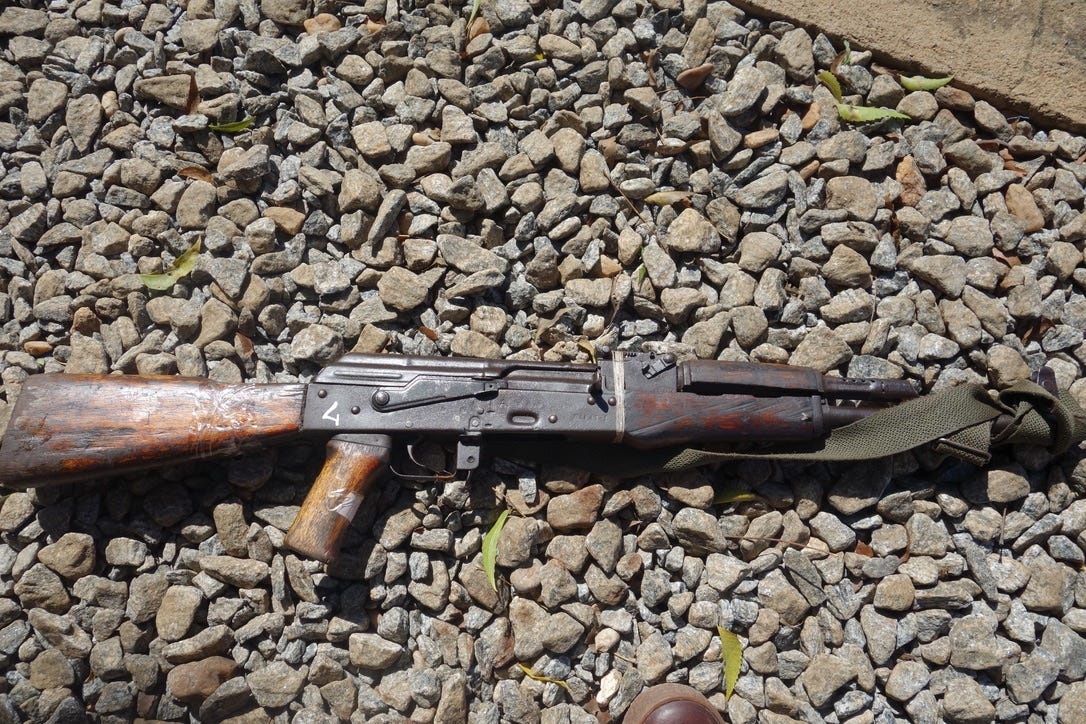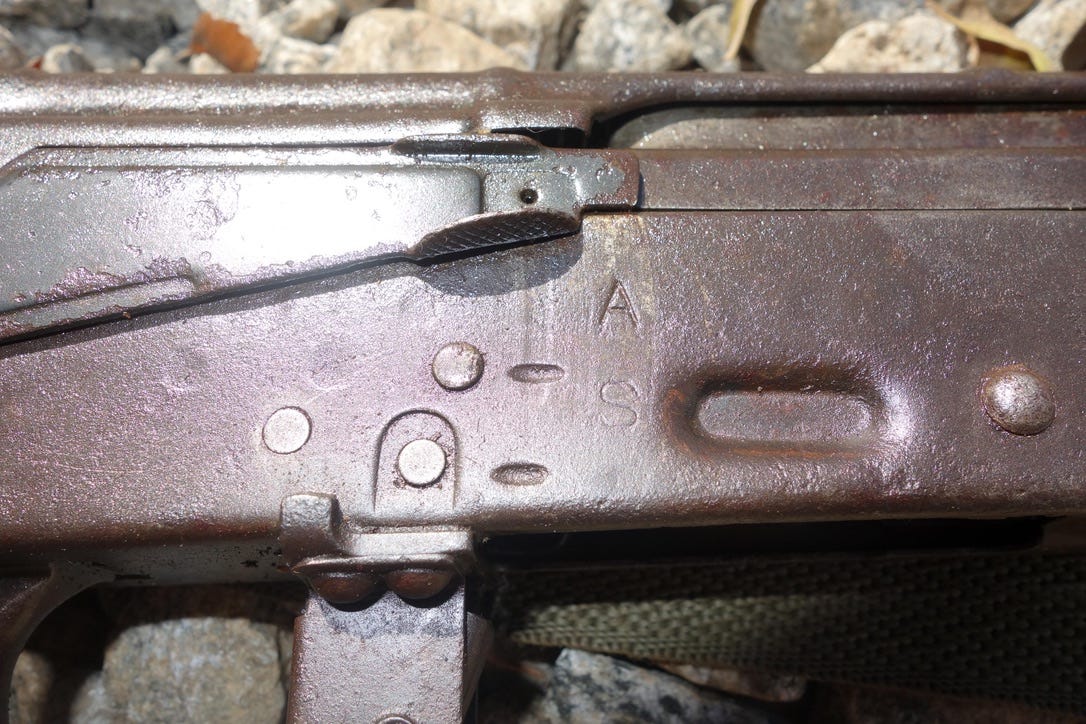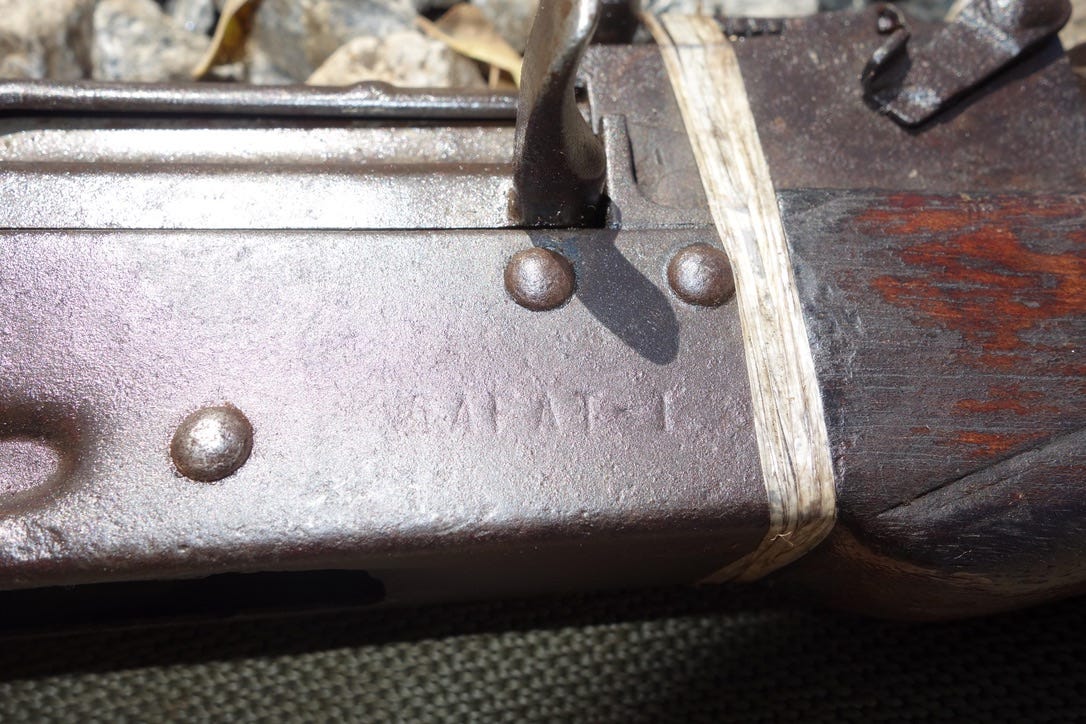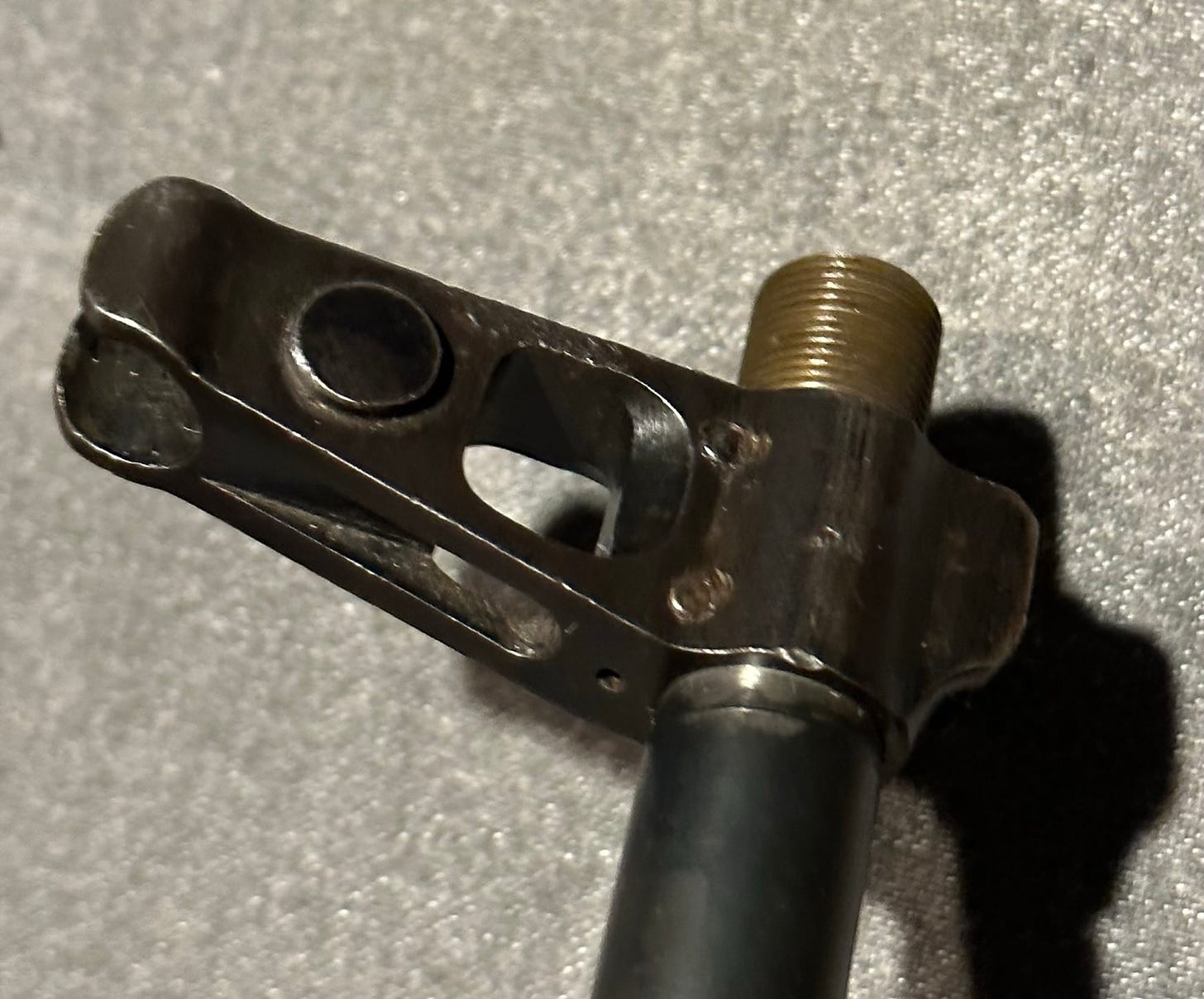
Introduction
It has been rumored that Ethiopia has been producing an AK103 pattern 7.62x39mm assault rifles for several years as of writing this paper in mid 2023, but there has been no substantial evidence of a possible Ethiopian made “true” AK103 pattern rifle until fairly recently. In 2022, several photos of mysterious AK103 pattern rifles were posted by Oromo rebel groups on social media, sparking the interest of the author to further investigate the possibility that Ethiopia produces a “proper” AK103 pattern assault rifle.
Gafat Armament Engineering Industry
If Ethiopia is in fact producing an licensed, or unlicensed, AK103 pattern assault rifle, this rifle is likely produced at one of the several factories that is controlled by Gafat Armament Engineering Industry.
Gafat Armament Engineering Industry (GAI) is a state owned subsidiary of the Metals and Engineering Corporation (METEC). GAI was established in 1986. GAI allegedly received assistance from the Democratic People's Republic of Korea (DPRK) in the 1980s. It is generally accepted that the DPRK did assist GAI with plans & technical advisors to set up a manufacturing line to produce the Type 68 pattern 7.62x39mm assault rifle in Ethiopia. This obscure Ethiopia Type 68 clone is designated the GAFAT-1.

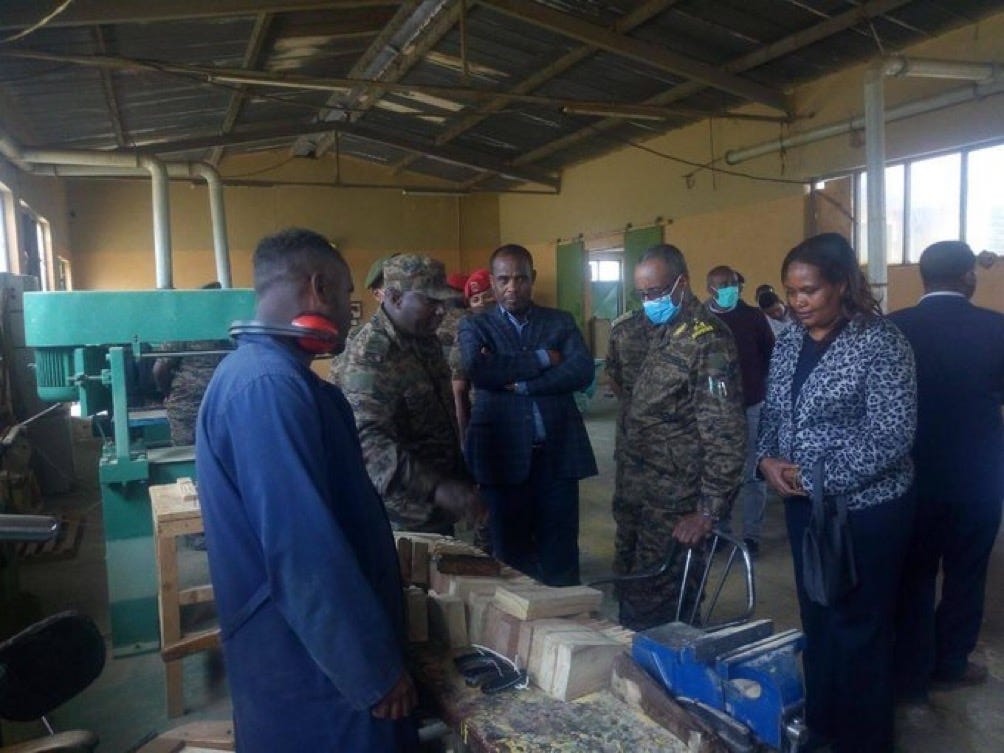
The GAFAT-1

The Ethiopian GAFAT-1 is a clone of the Korean Type 68 produced by GAI in Ethiopia. The Type 68 assault rifle is a unique Kalashnikov variation that borrows features from European AKM pattern rifles, as well as features from the 1955 pattern Soviet AK, which the DPRK actually produced under license as the Type 58. It is unknown exactly when GAI started production of the GAFAT-1, or if GAI still produces the GAFAT-1 in 2023.
Like the Type 68, the GAFAT-1 has an AKM-ish front trunnion & rivet pattern, stamped steel receiver, AK style selector, AK themed bolt carrier, heavy AK-ish barrel, AKM accessory/bayonet lug, small selector notches, & a unique vented gas block. Images of GAFAT-1 rifles seen by the author all appear to feature large auto-sear pin embossings, whilst only some Type 68 rifles have this feature. The selector markings for the GAFAT-1 are comprised of latin character, with an “A” designating the full-auto position & “S” designating the semi-auto position.
The ET-97/1
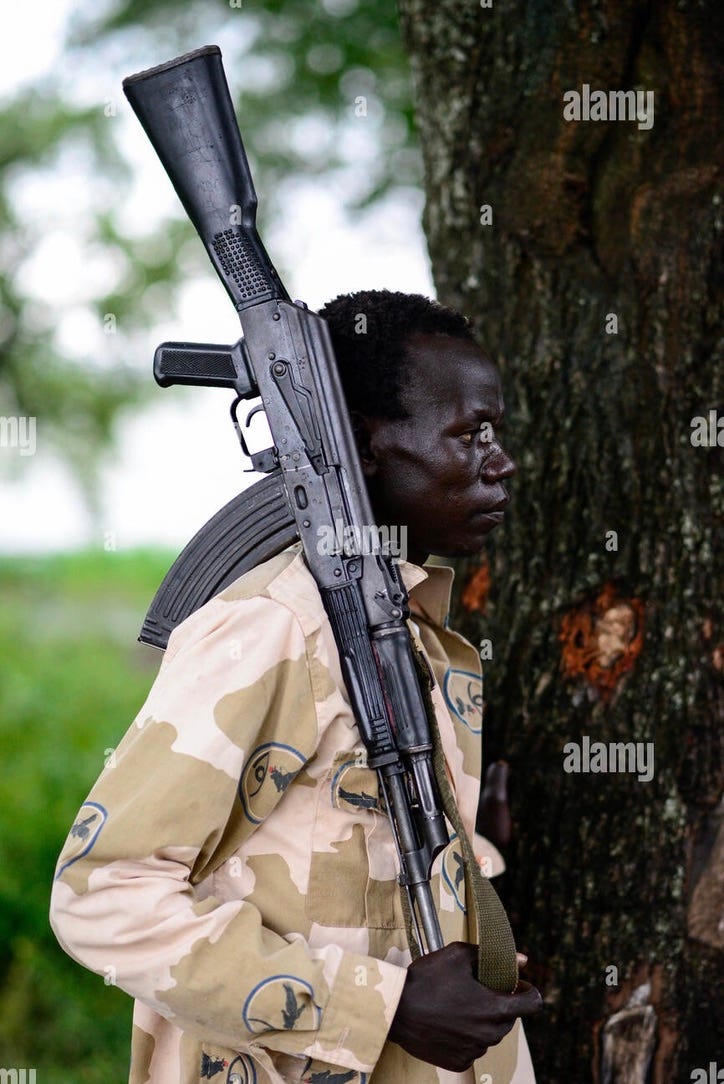
In the image above (Fig 3-1), an individual pictured in an Ethiopia village can be seen carrying a rather odd Kalashnikov pattern rifle. Judging by the AK 1955 pattern steel magazine loaded in this rifle, it is somewhat safe to assume that this rifle is chambered for 7.62x39mm. This rifle features an AK74 style rear trunnion rivet pattern, AKM style fire selector, smooth top cover, AKM style gas block featuring a accessory/bayonet lug, bolt carrier with lightening cut, no visible sling mount present near the gas block (unlike the GAFAT-1), and uniquely Ethiopian black furniture which can be observed on some GAFAT-1 rifles & other Kalashnikov rifles used by Ethiopian National Defense Force soldiers & Ethiopian rebel groups. This rifle does appear to feature a GAFAT-1 (Type 68) style mainspring assembly.
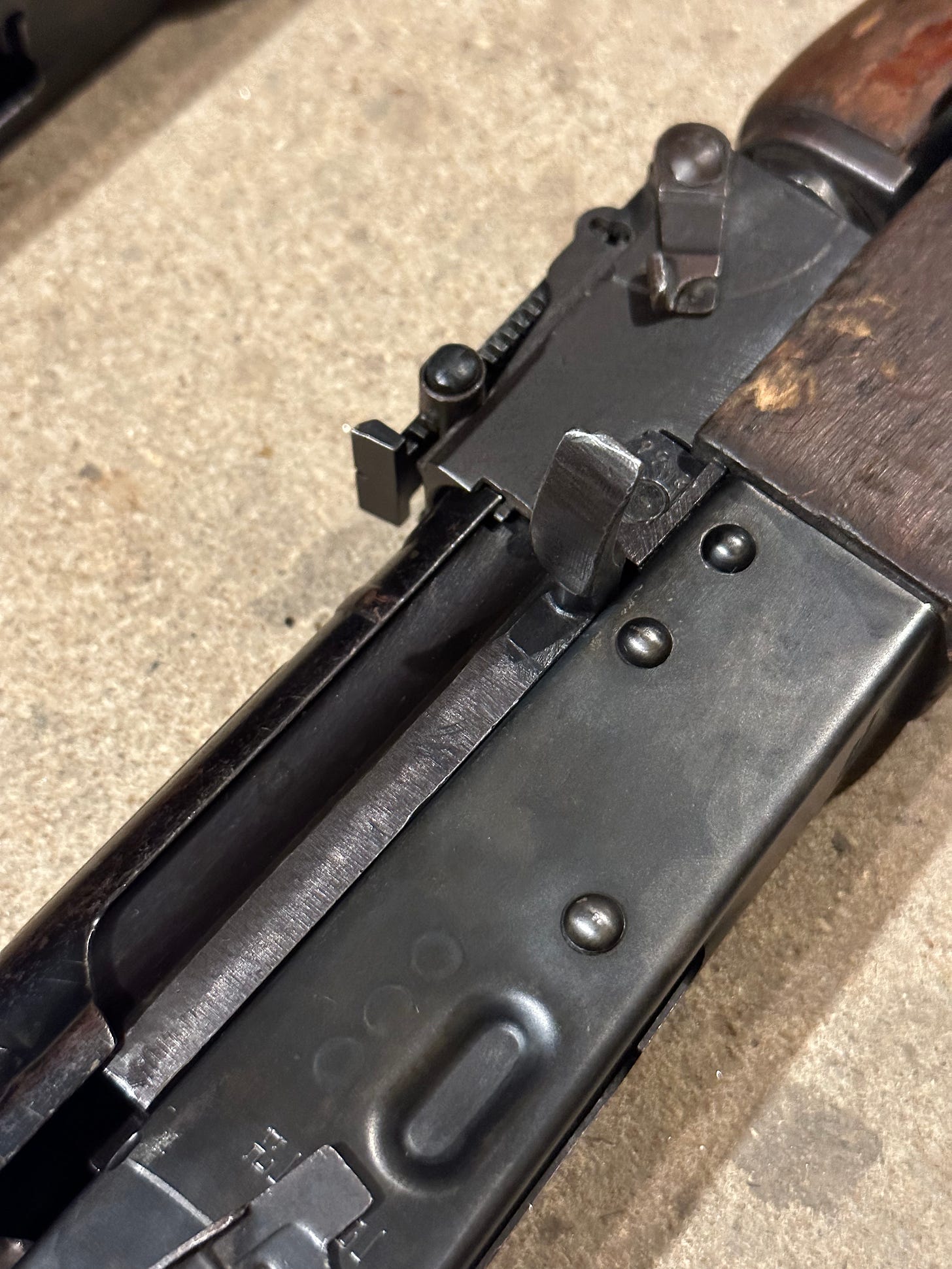
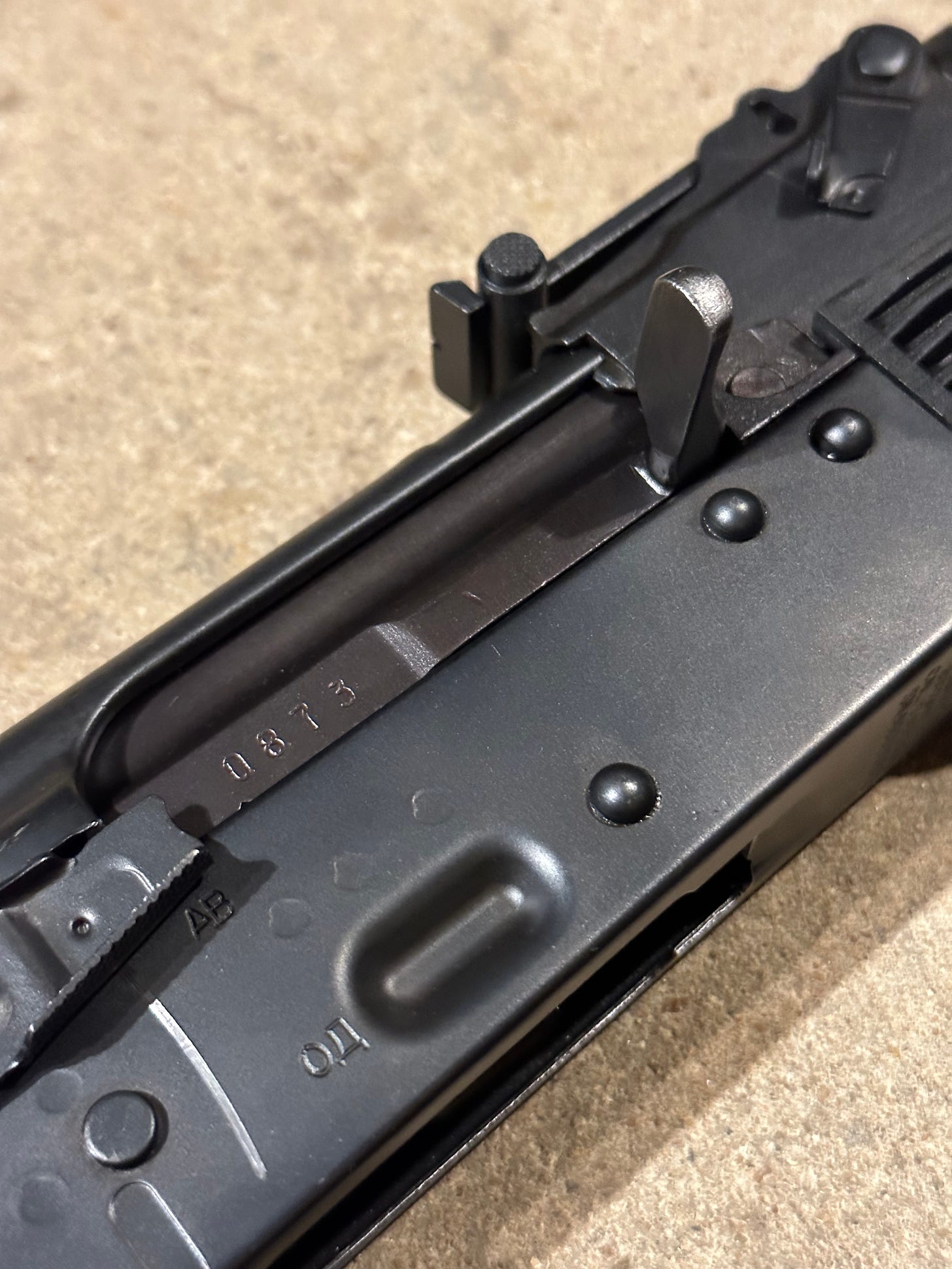
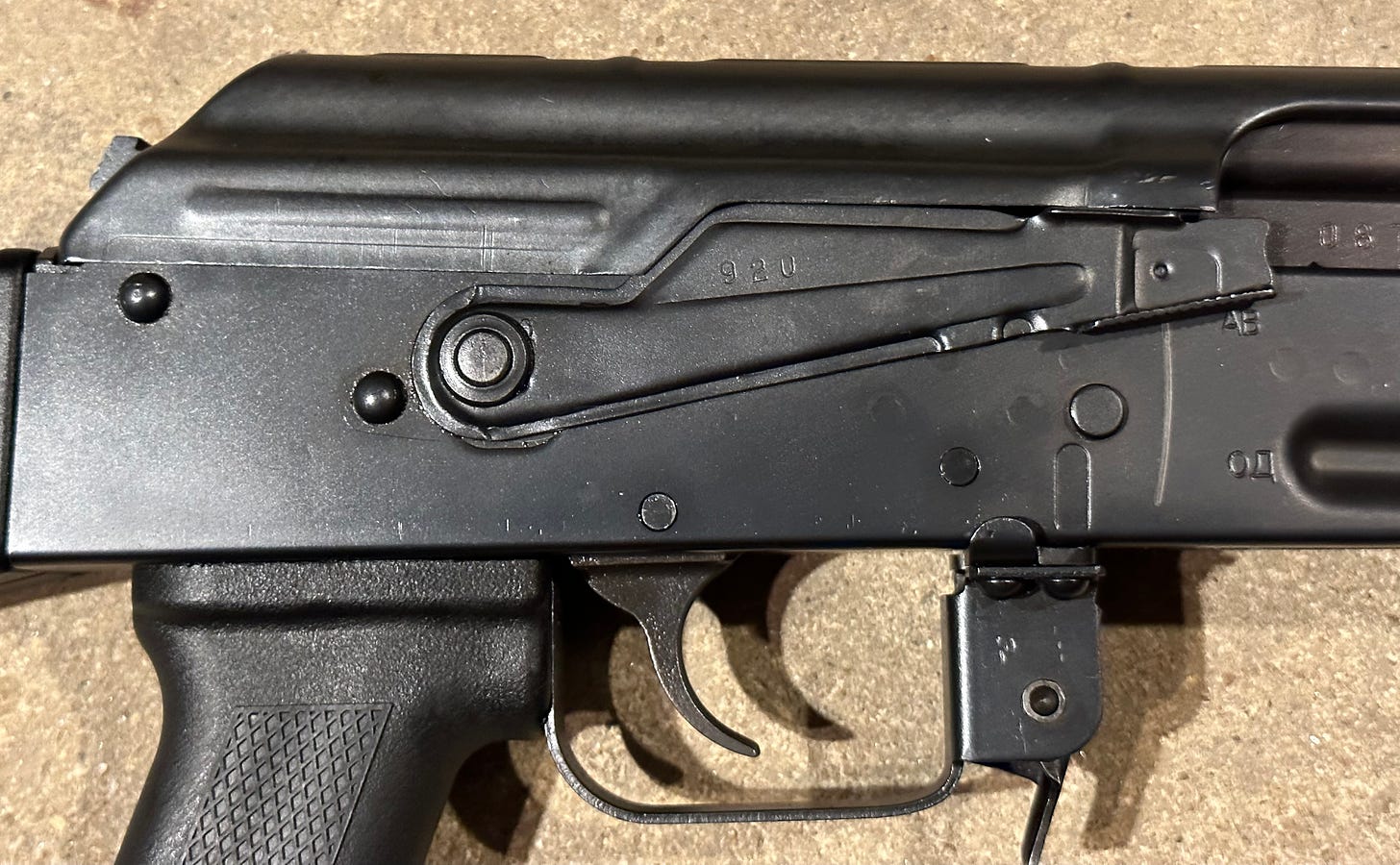


The images above & below show Ethiopian soldiers carrying a similar pattern of Kalashnikov that is seen in Fig 3-1. These rifles appear to not just be GAFAT-1 rifles fitted with “AK74” muzzle brakes, but appear to be their own unique pattern of 7.62x39mm Kalashnikov rifle that vaguely resembles an “AK 103”, but primarily differing in the fact that these rifles have a fixed buttstock. The rifles seen in Fig 3-6 & Fig 3-7 have front sling mounts located near the gas block, as well as front sight blocks that feature an AK74 style bayonet lug. It is possible that these rifles are inspired by mid-production Soviet AK74 assault rifles, or even the Korean Type 88 5.45x39mm assault rifle.
The assault rifles shown in Fig 1-3 & Fig 1-4 that are possibly referred to as the ET-97/1 also have similar characteristics to these rifles seen in Fig 3-1, Fig 3-6, & Fig 3-7. In Fig 1-3 & Fig 1-4, it is clearly (both a bayonet & GP25 pattern under barrel grenade launcher are fitted at the same time) demonstrated that the pictured rifles have a separate bayonet & accessory lug, similar to an AK74, Type 88, or AK103 assault rifle.
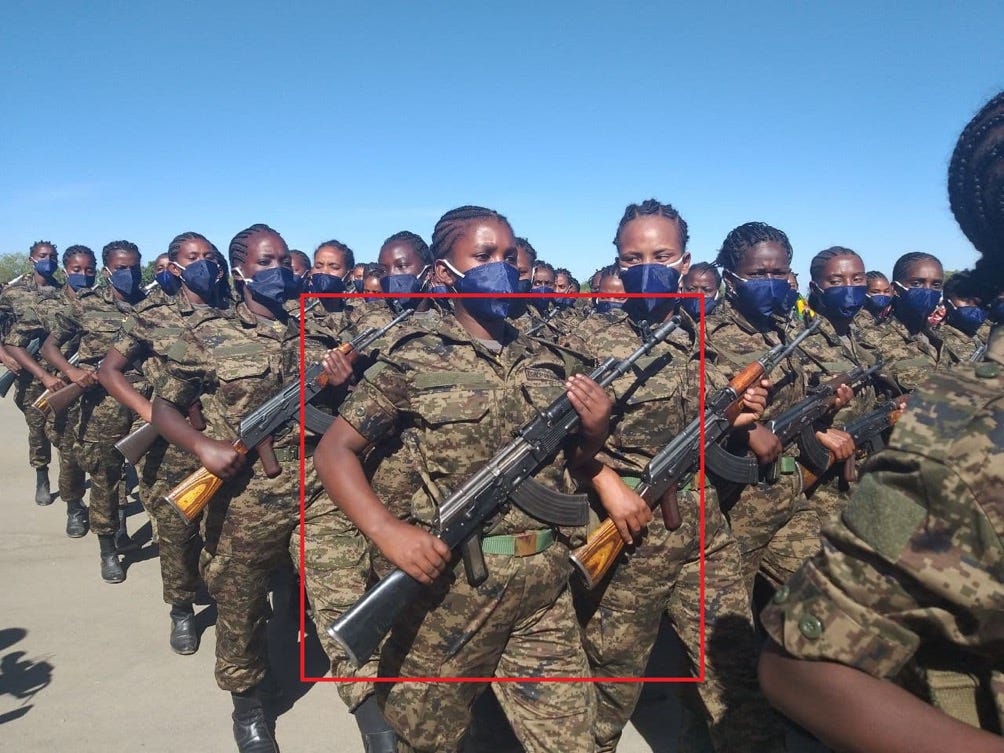
Another AK74 feature seen on these AK74 themed rifles is the early to mid production “stepped” AK74 pattern muzzle brake. A similar style of stepped muzzle break is also seen on the Korean Type 88 5.45x39mm assault rifle that is produced by the DPRK.
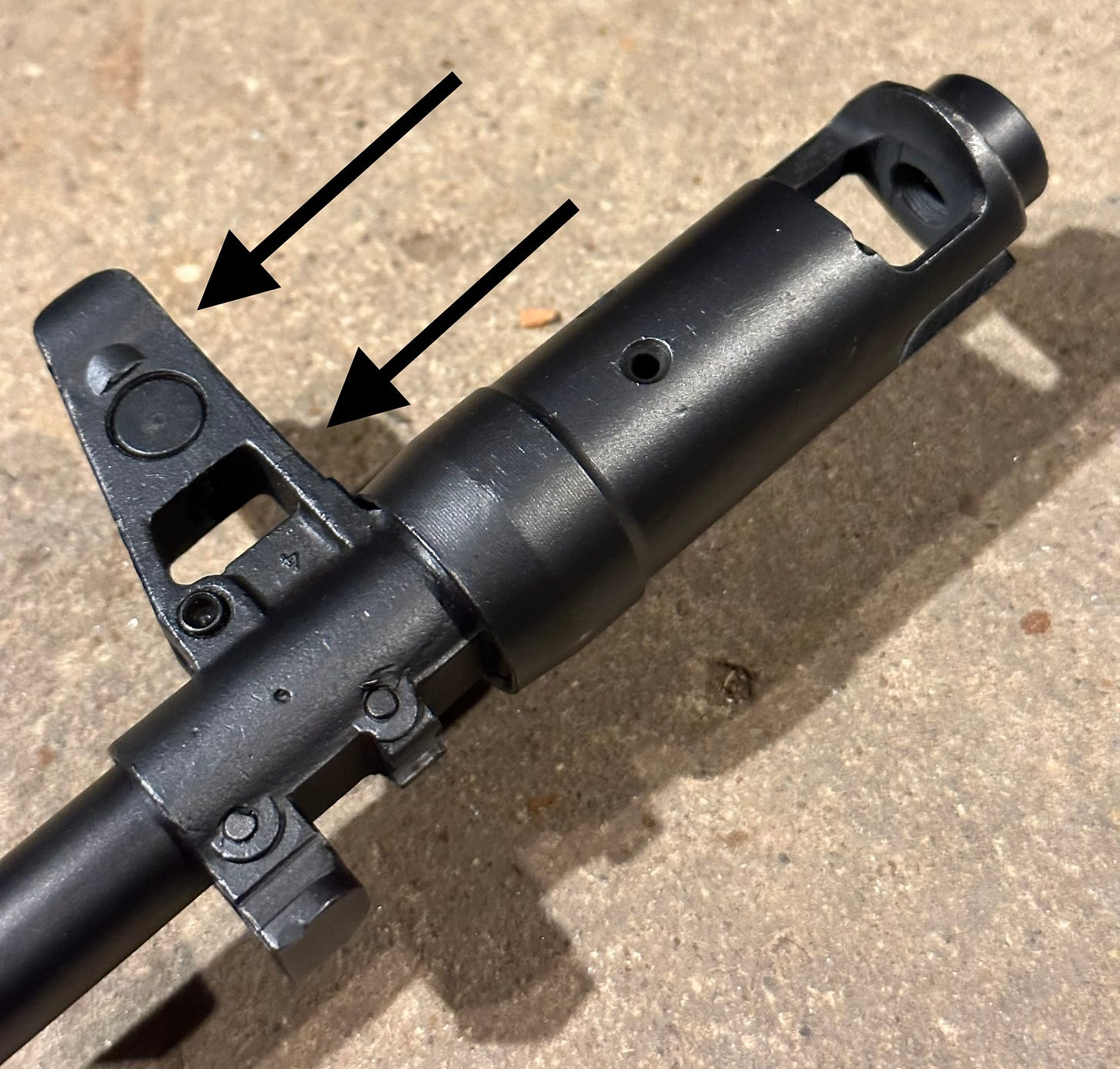
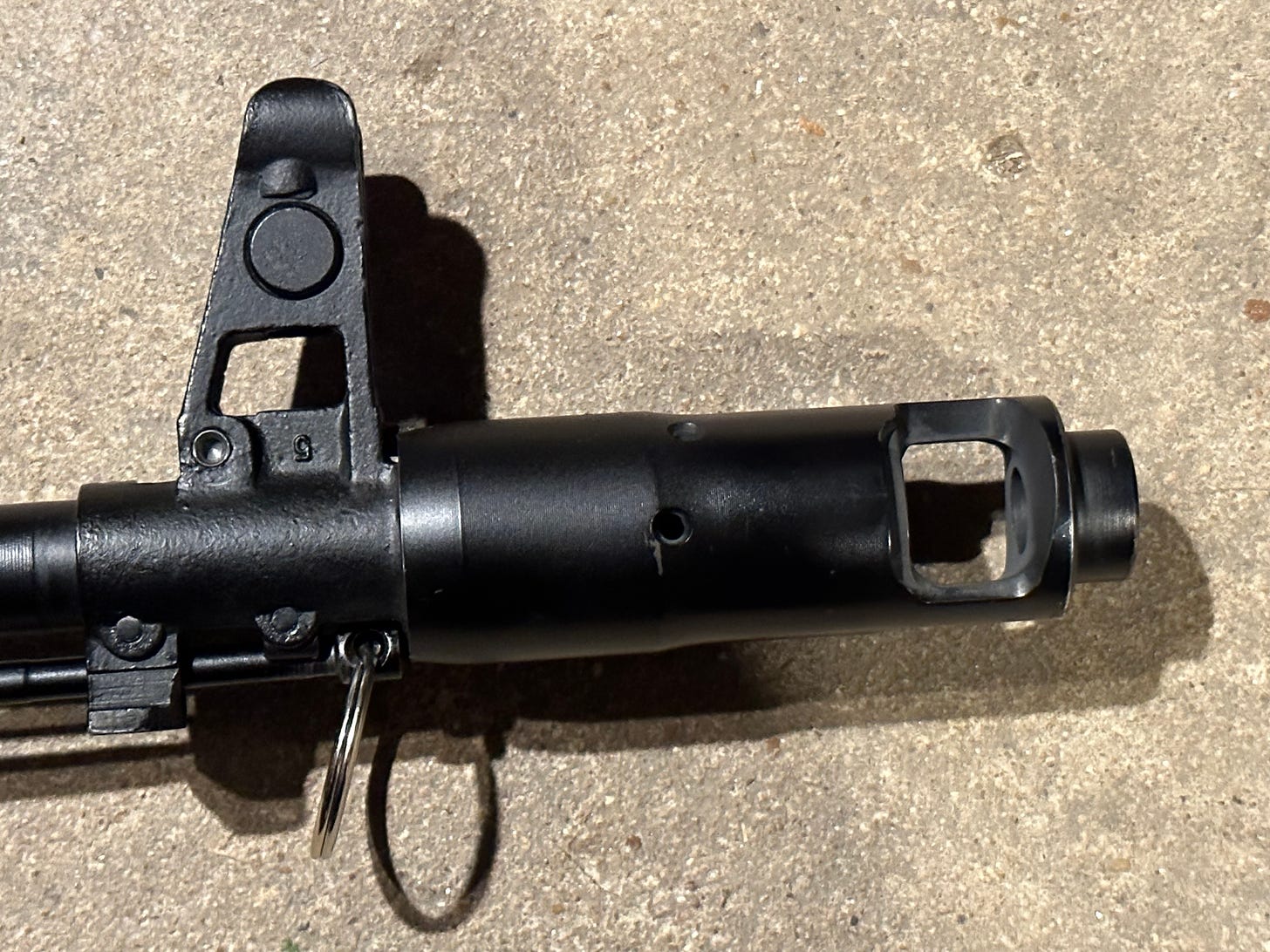
Digging deeper
According to a research paper titled Productivity improvement of the AK 103 assembly line written by Ethiopian based Tadesse Gebray & Ashish Thakur that was published in 2018, production of a rifle referred to as the “AK 103” was underway at a GAI controlled factory located 15km away from Bishoftu, Ethiopia in the late 2010s. Production amounts of the “AK 103” by GAI was allegedly 3430 rifles per year at the time this paper was written. This “AK 103” rifle produced by GAI is likely the same pattern of rifle pictured in Fig 1-3, Fig 1-4, Fig 3-1, Fig 3-6, & Fig 3-7. This “AK 103” production research report was written with the support of Mekelle University in Ethiopia.
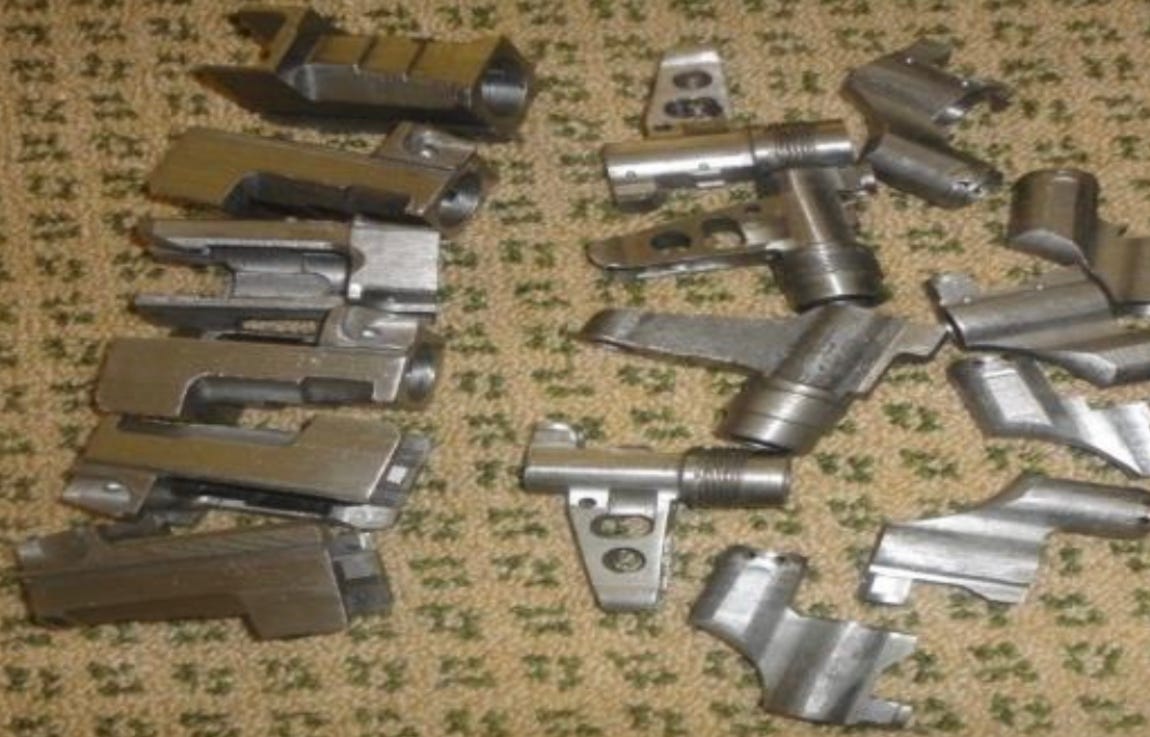
Apparently there were issues with the “AK 103” manufacturing & assembly process at GAI, leading Gebray & Ashish to write a research paper that devised some solutions to increase quality & production amounts of the “AK 103” at the GAI factories.
In Fig 4-1, several Type 88 themed front sight blocks can be seen. On an AK74 rifle, Type 88, & Russian AK103, the barrel is not threaded, instead the muzzle device is threaded onto large diameter threads located on the front sight block.
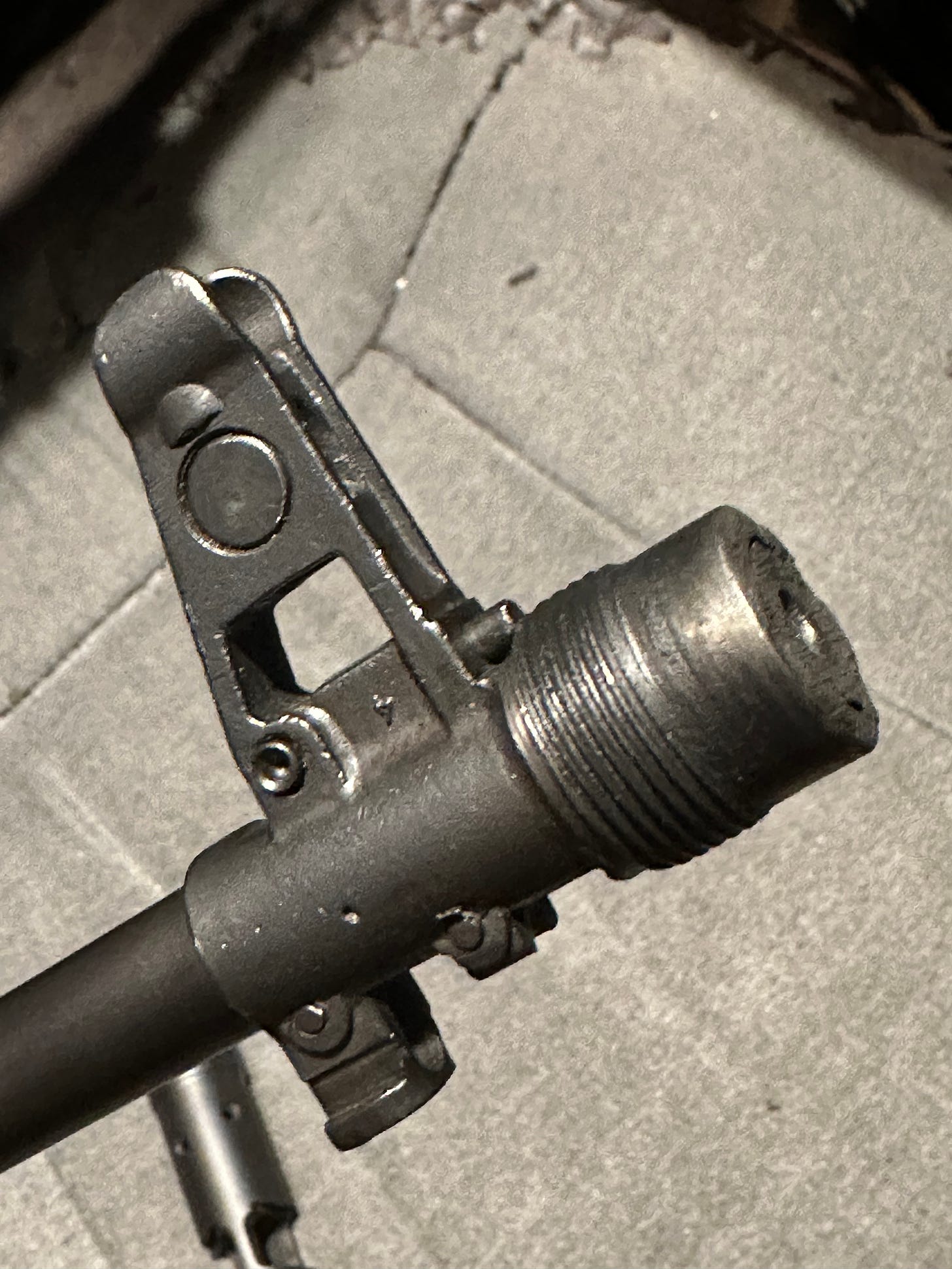
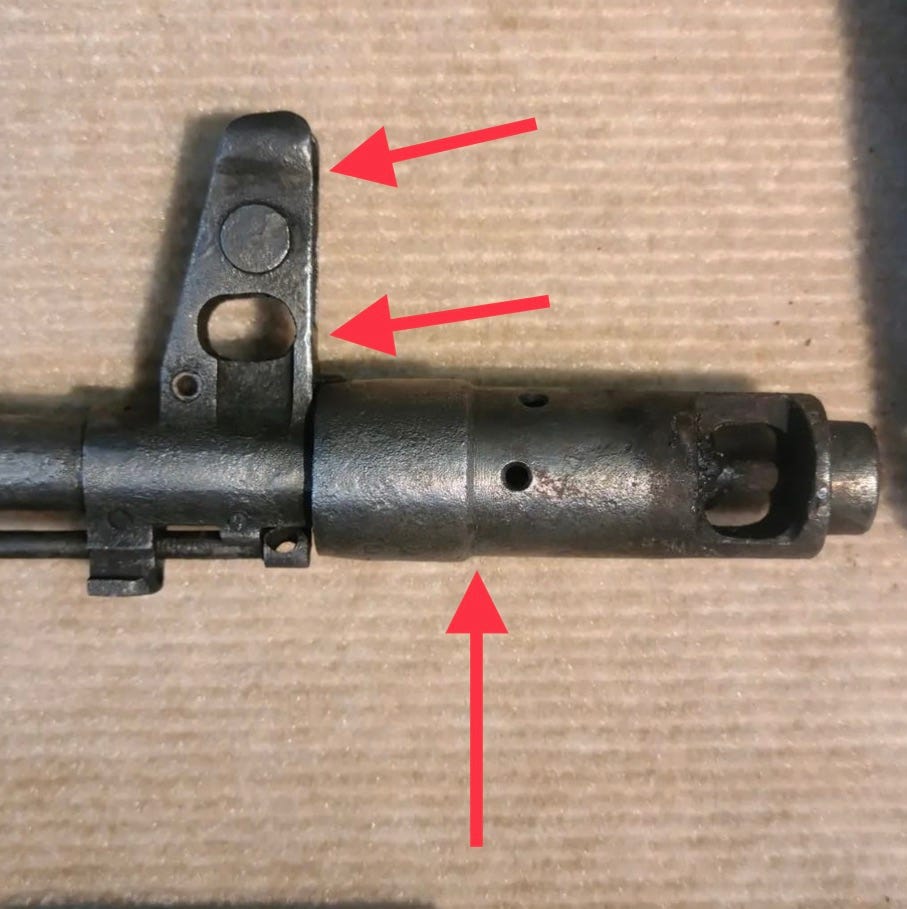
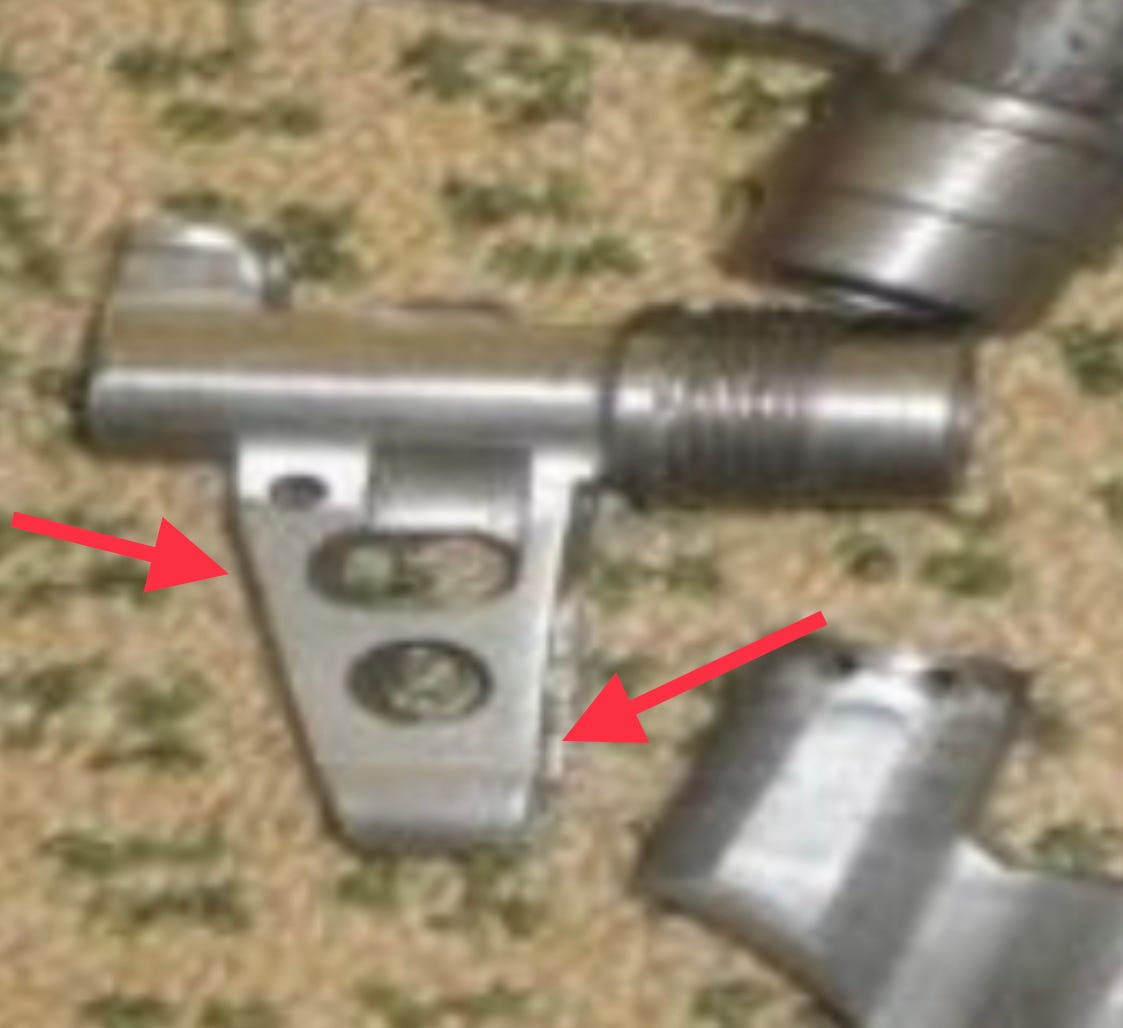
According to Aragaw Meressa, an Ethiopian based mechanical engineer who also wrote a research paper covering possible solutions to reduce the amount of defective products manufactured in the GAI factories, GAI did at some point have a contract with the DPRK based Korean Ryong Bong Corporation (KRBC), who assisted with setting up the ET-97/1 rifle & ET-97/2 under barrel grenade launcher production line. The United Nations Security Council website describes KRBC as a “defense conglomerate specializing in acquisition for DPRK defense industries and support to that country’s military-related sales”.
It is highly likely that the KRBC provided technical production information for the Type 88 front sight base & the Type 88 muzzle device. These designs were likely slightly altered due to 7.62mm being a larger caliber than 5.45mm. What is odd, is that at least one Ethiopian “AK 103” features an AK74 style rear trunnion, which is not present on known Type 88 rifles.
Judging by the reports written by Gebray, Ashish, & Meressa, the AK74 themed rifle that is nicknamed “AK 103” is likely officially designated the ET-97/1. The brochures, or pamphlets, that show this unique AK74/Type 88 themed rifle also refer to this rifle as the ET-97/1. Judging by the “97” present in the designation ET-97/1, this rifle possibly entered production, or was designed in, the year 1997.
The ET-97/1 is a truly odd rifle that borrows features from the AK74, Type 88, Type 68/GAFAT-1, & AKM.

A second generation of GAI AK103?

In October of 2022, the photo above was uploaded to social media by a Oromo rebel group. The rifle at the top of the image appears to possibly be an Iranian produced KL-133 7.62x39mm AK103 pattern assault rifle, whilst the rifle on the bottom is of unknown origin.
In the middle of the photo, several thirty round magazines can be witnessed. On the far left, middle right, and far right, Chinese or Iranian produced thirty round stamped steel thirty round 7.62x39mm AK magazines can be seen. Two Russian 7.62x39mm polymer metal reinforced magazines produced by Izhmash can also be observed in the middle of the photo.
The rifles in this photo have what appear to possibly be Ethiopian produced thirty round polymer magazines. On the bottom of these magazines, a star can be seen that is very similar to the star seen in the center of the Ethiopian flag.
The bottom rifle that is speculated to be at least a partially produced at a GAI factory by the author has some unique features that make it quite distinctive. Firstly, the barrel components, comprising of the gas block & front sight block, on this rifle are pinned in place, rather than pressed in place. Most Russian AK103 rifles that have been produced by Izhmash (Now officially known as Kalashnikov Group) have barrel components pressed in place.
This possible GAI assembled rifle has the weapons chambering marked on the left side of the rear sight block, as well as a serial number marked on the front trunnion. The magazine release is straight, and the bolt cam initiator is rounded. All these features are not present on known versions of the Iranian KL-133 rifles.
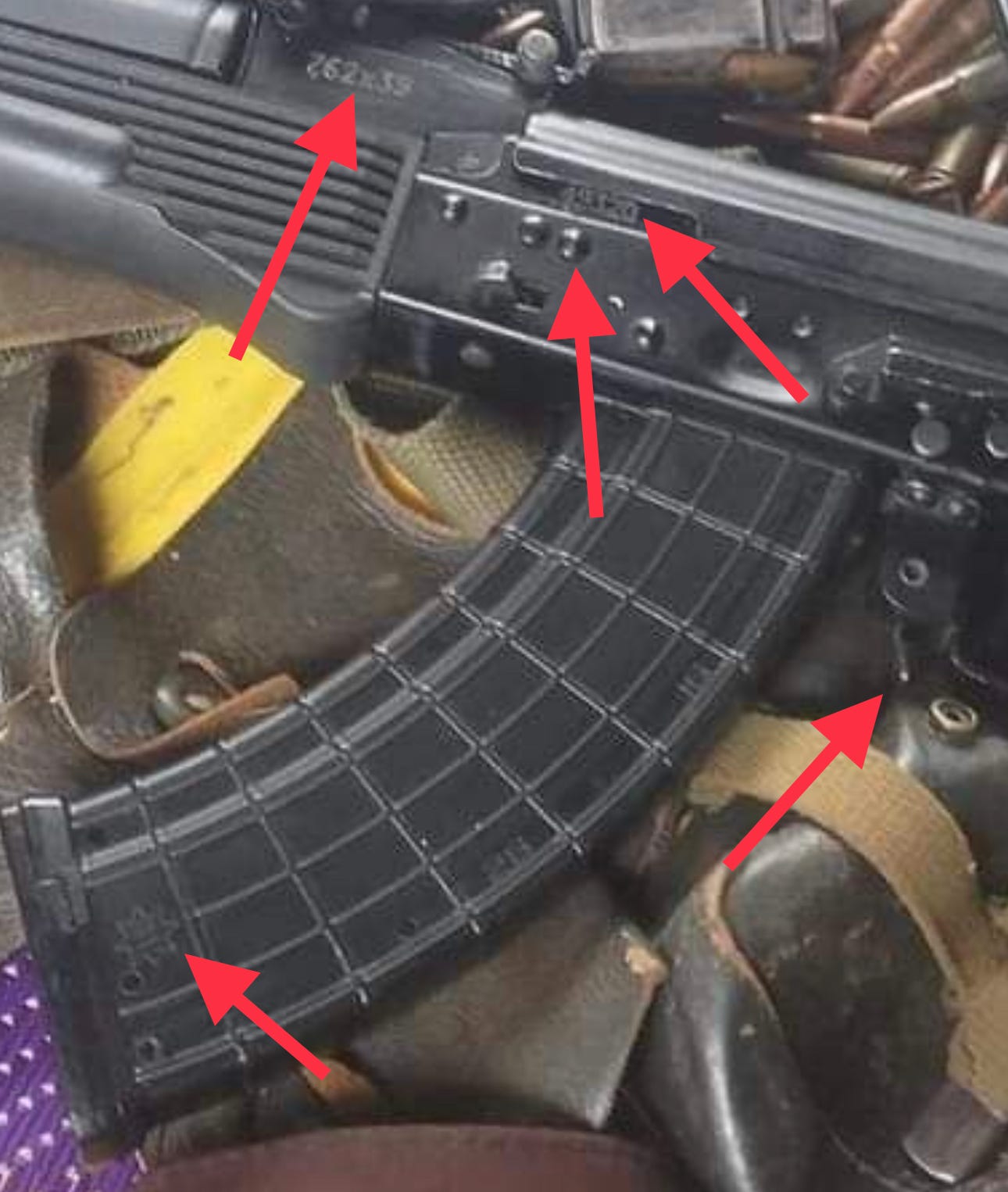
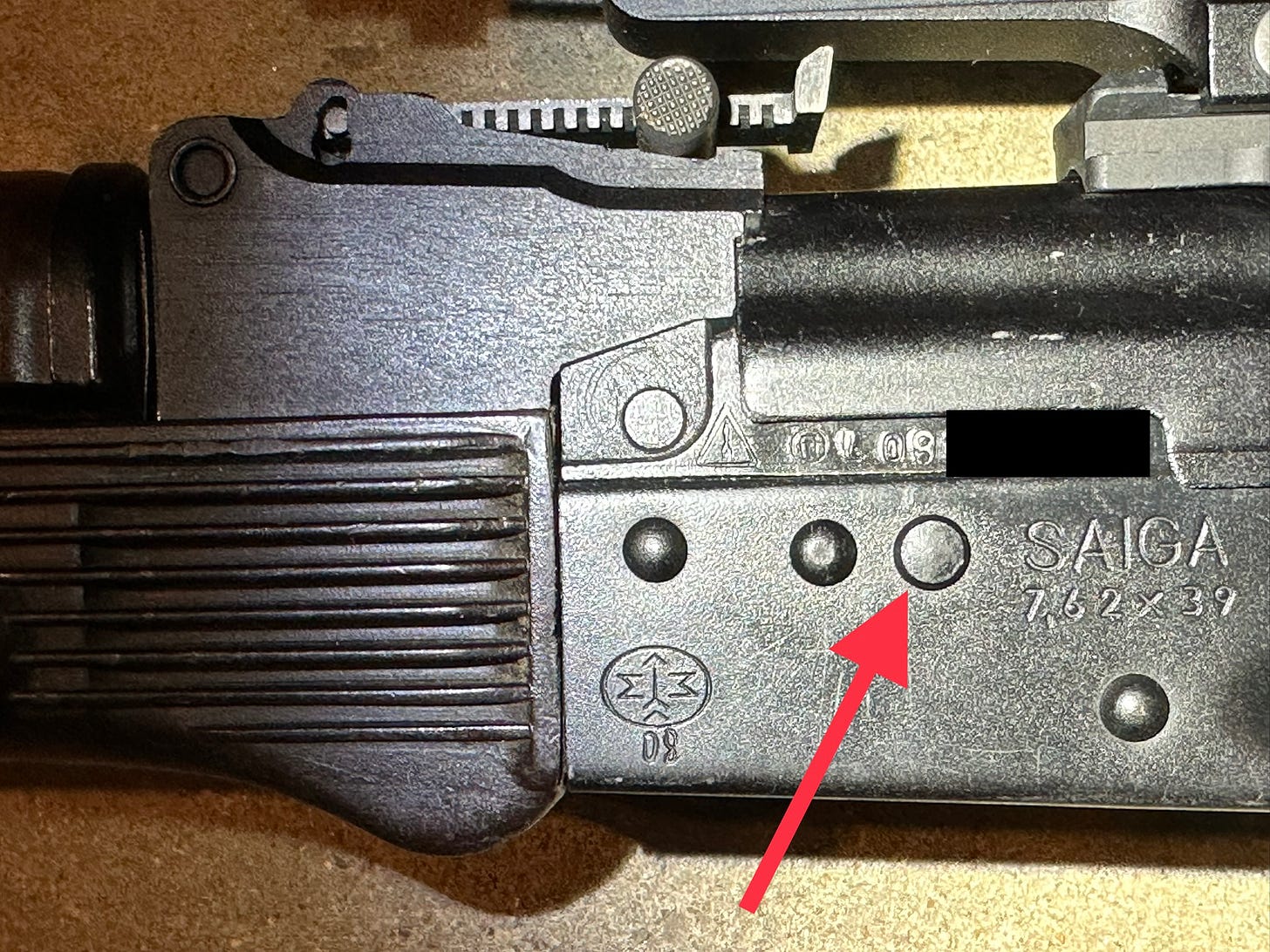
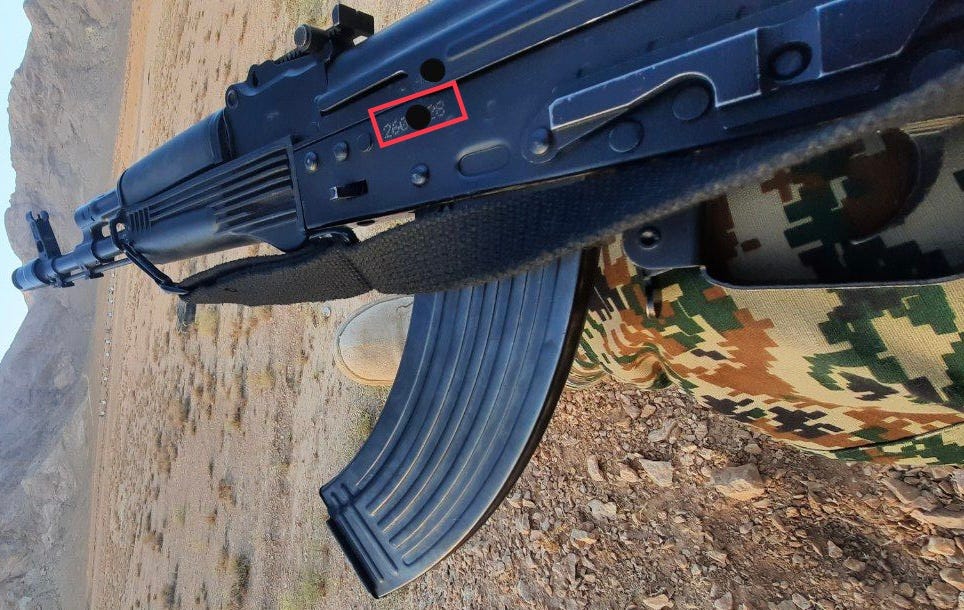
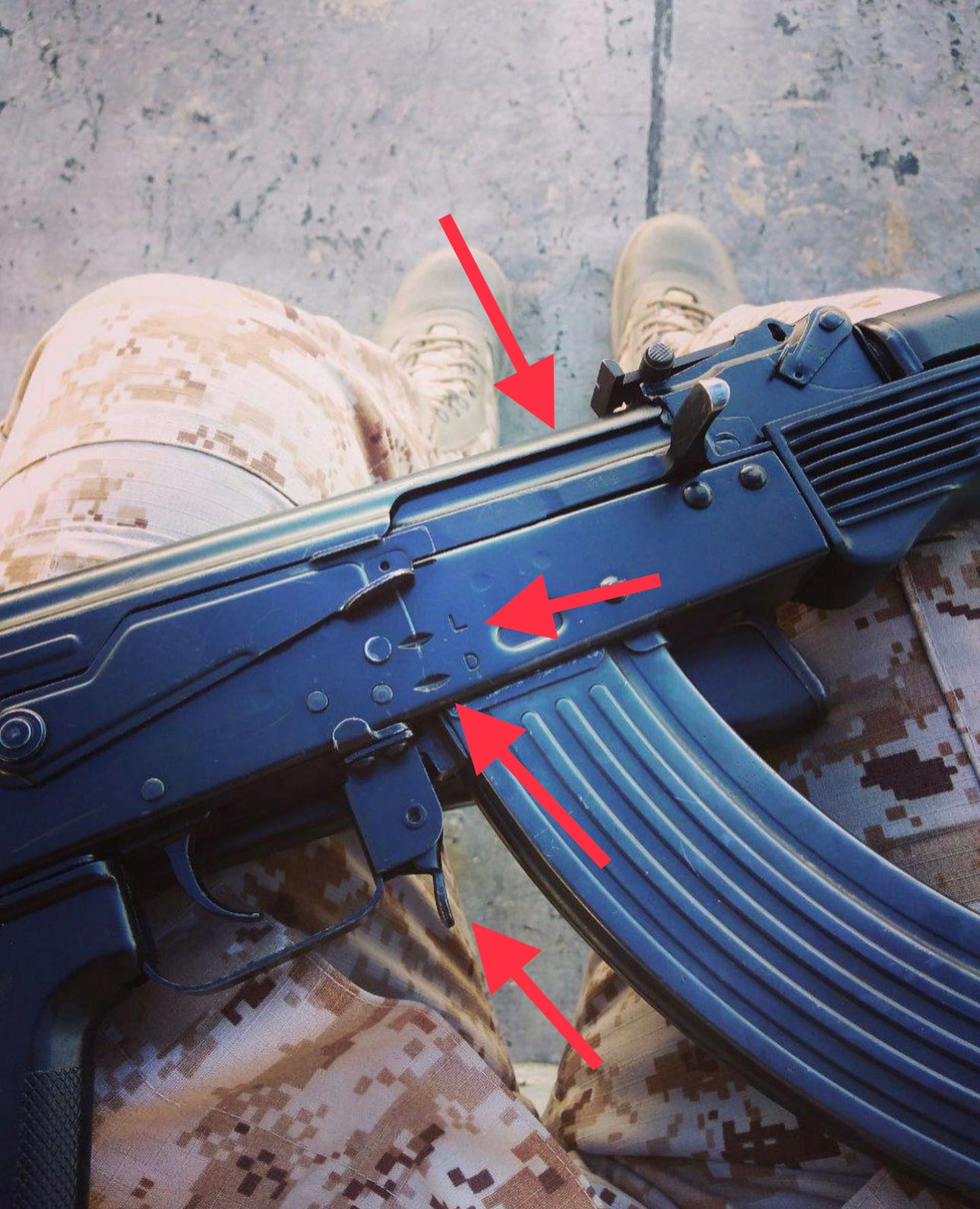
These possibly Ethiopian produced AK103 pattern rifles are very similar to Russian & Iranian produced AK103 pattern rifles. One could speculate that either (or both) Iran or Russia provide components to produce these “second generation Ethiopian AK103” rifles. It could also be speculated that Ethiopia acquired the technical data package (TDP) & production assistance from Kalashnikov Group via Rosoboronexport. There is no proof to back up these claims that Ethiopia has the AK103 TDP or receives parts from Iran or Russia, but these pictured AK103 pattern rifles of unknown origin are so similar to the Russian AK103 rifles, that it would be hard to believe these are completely reverse engineered in Ethiopia without any assistance from either Iran or Russia. It is also possible that these are Russian or Iranian produced rifles that feature pinned barrel components & unique markings.

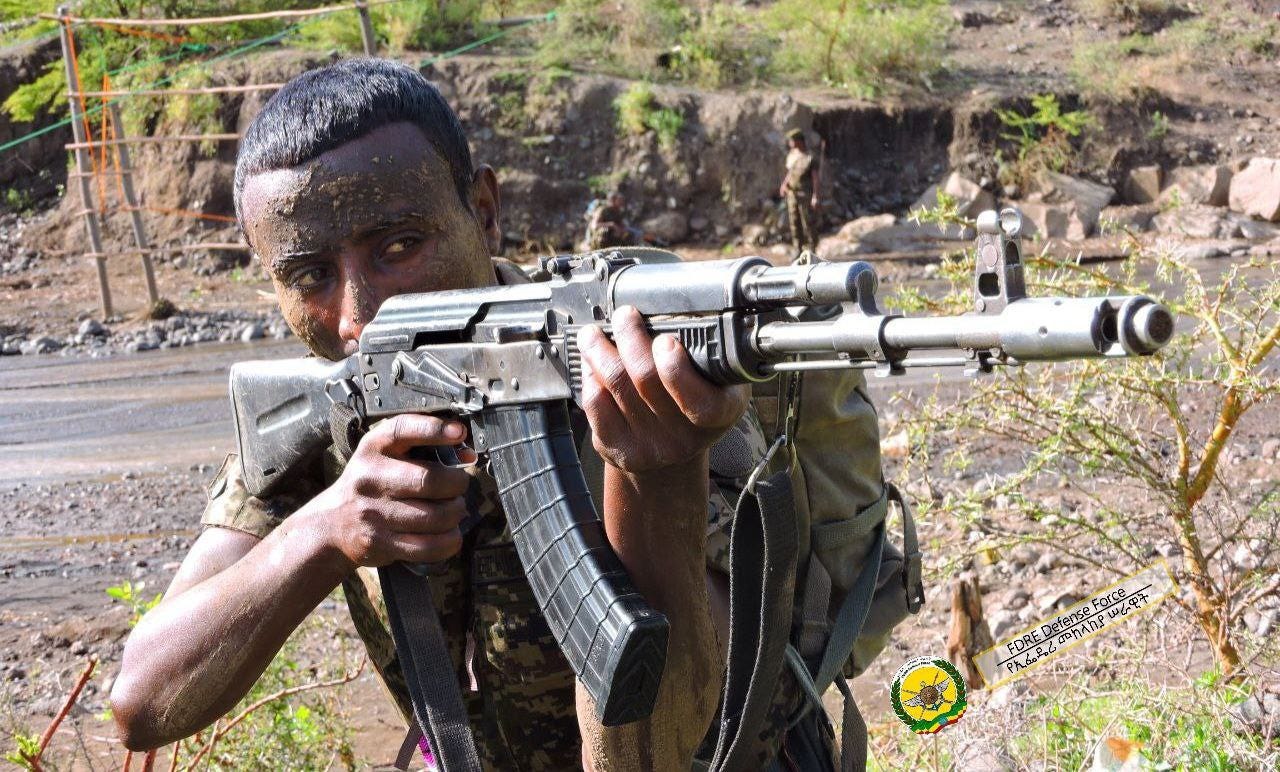
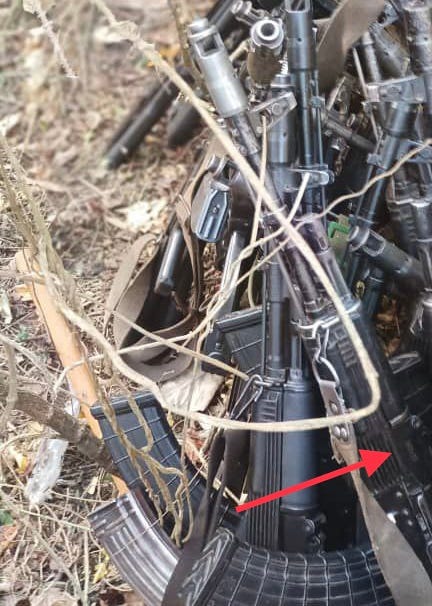
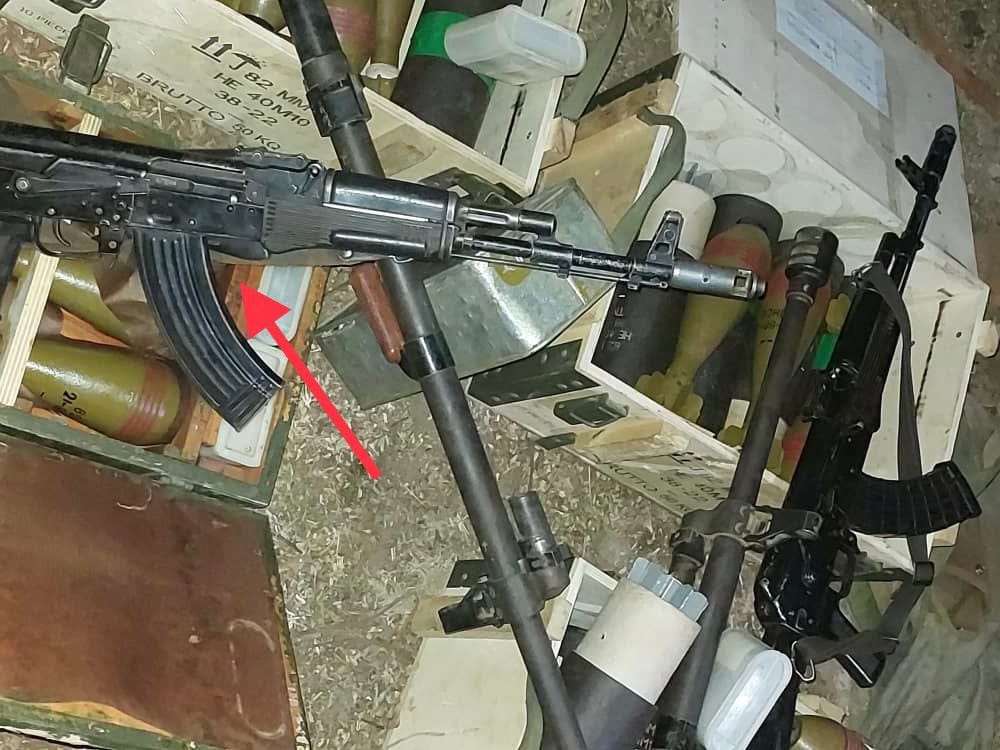
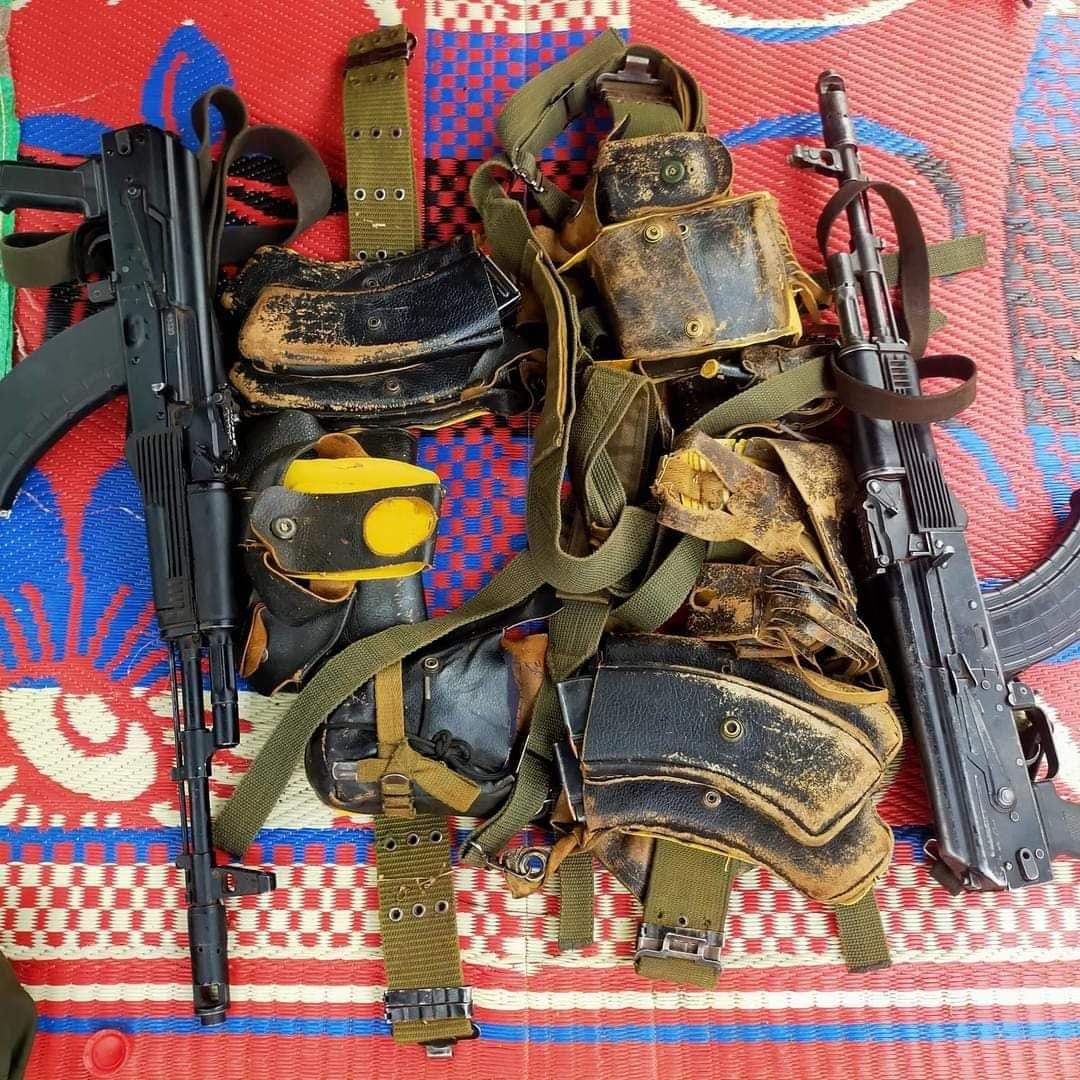
The rifle pictured on the left in Fig 5-11 is an AK103 pattern 7.62x39mm assault rifle of possibly Ethiopian origins. The rifle has pinned barrel components, & what appears to be more than three serial number digits present on the right side of bolt carrier (Izhmash usually only marks AK bolt carriers with three digits), and has small selector notches (unlike the AK 1955 style selector notches seen on the Iranian KL-133). The magazine loaded in the rifle on the left appears to be a thirty round magazine produced by Kalashnikov Group.
Why the presence of Russian AK103/AK104 magazines? Well, the Ethiopian military does appear to use Russian made AK103 pattern rifles.
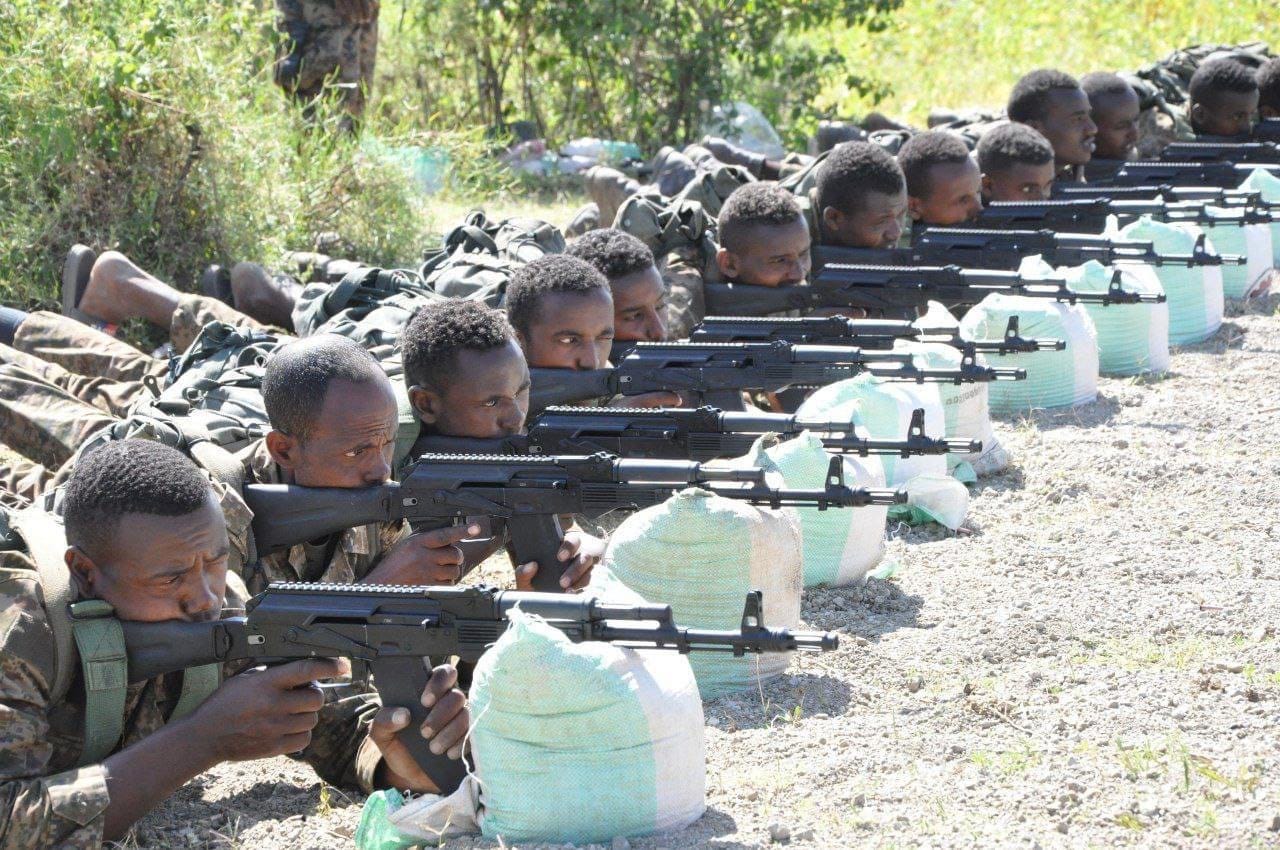
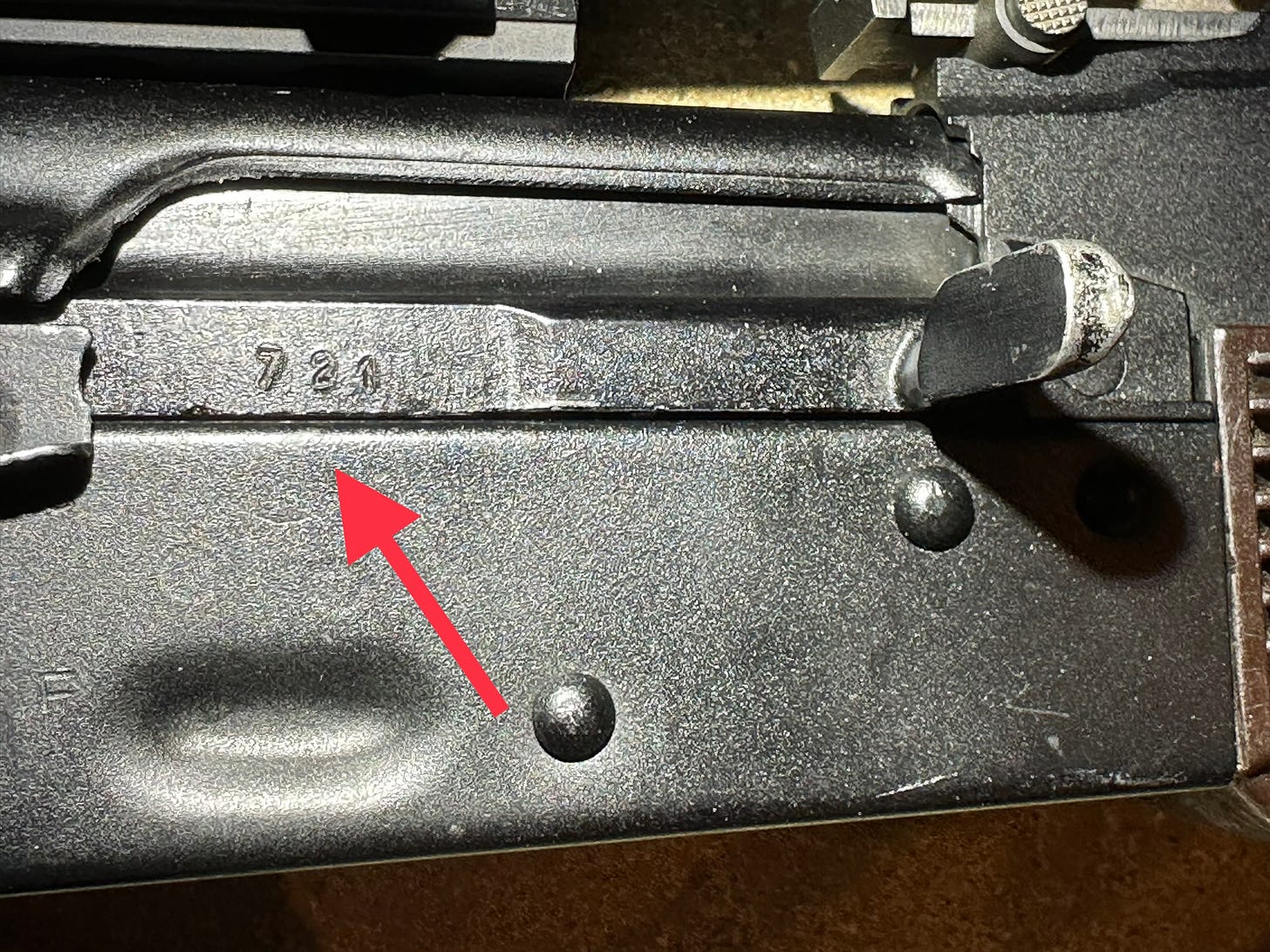
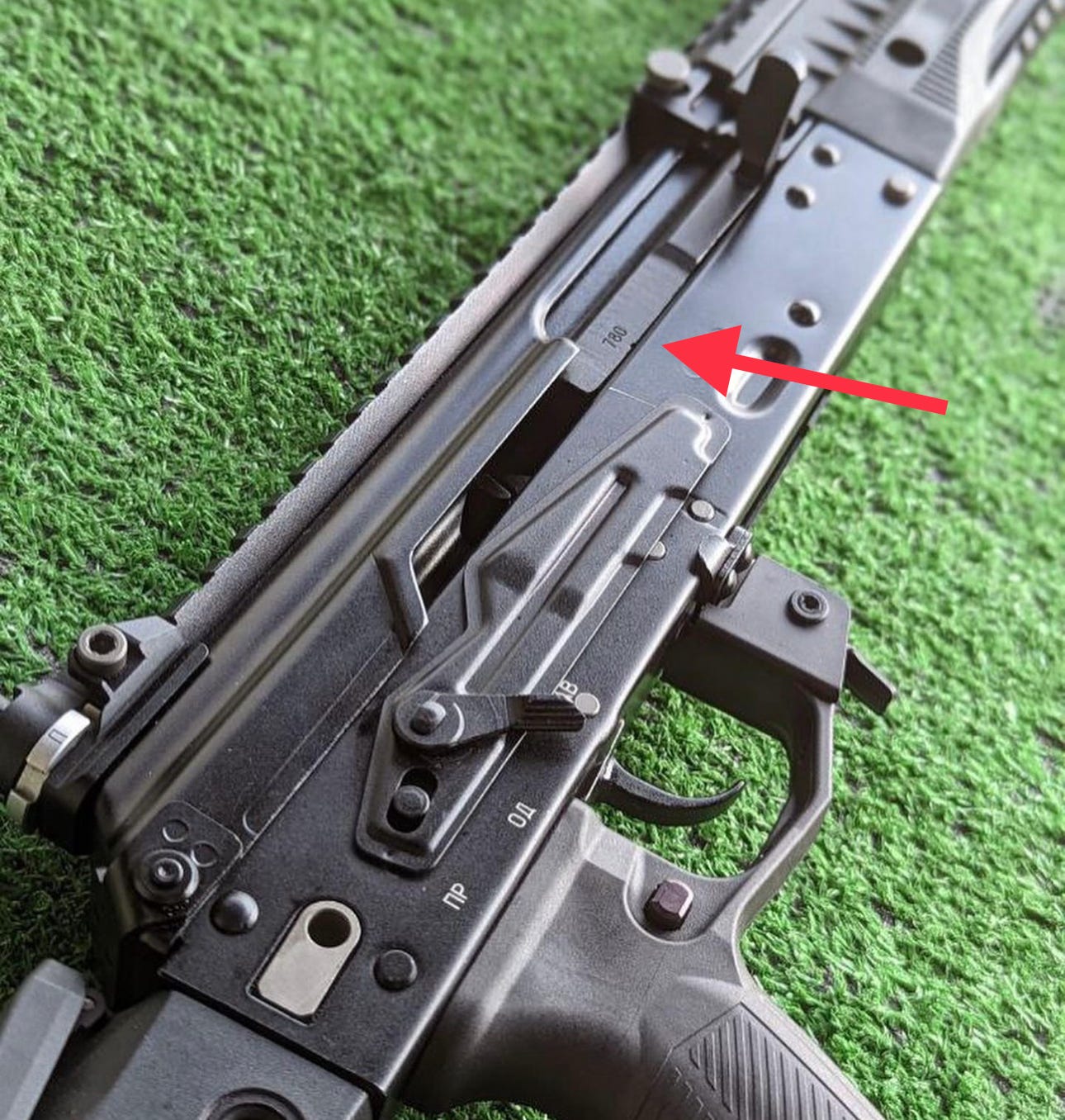
Conclusion
GAI has quite the interesting track record of producing odd Kalashnikov pattern rifles. The AK103 pattern rifles of unknown origin appear to be very well made compared to the GAFAT-1 & ET-97/1 (Ethiopia’s only known “AK 103”). In the end, the origin of this mystery AK103 cannot be proven until on the ground professional small arms investigators have the ability to thoroughly examine multipe of these rifles.
Acknowledgments
I would like to thank WillScary on YouTube (aka 7N6co on Instagram) for inspiring me to write this article & for his insight on some of the topics that were covered in this article.
I would also like to thank Vlad Onokoy for inspiring me to write this article by publishing a video of a GAFAT produced AK many years ago, which brought my attention to Ethiopian made Kalashnikovs.
If you wish to see more neat “North Korean” Type 88 photos, check out ak47_catalog on Instagram.
Sources:
Limited, Alamy. “Ethiopia, Gambela, Village Tata of Anuak Tribe, with AK-47 Armed Village Civil Guard , the Region Is Insecure Due to Raids from South Sudanese Tribes Stock Photo.” Alamy, www.alamy.com/ethiopia-gambela-village-tata-of-anuak-tribe-with-ak-47-armed-village-civil-guard-the-region-is-insecure-due-to-raids-from-south-sudanese-tribes-image178193270.html. Accessed 13 June 2023.
werewolf0001. “Gafat.” LiveJournal, 27 Nov. 2012, werewolf0001.livejournal.com/535305.html.
“Korea Ryonbong General Corporation Security Council.” United Nations, www.un.org/securitycouncil/sanctions/1718/materials/summaries/entity/korea-ryonbong-general-corporation. Accessed 13 June 2023.
Makowsky, Peter, and Vann H. Van Diepen. “Is Ethiopia Violating UN Sanctions against North Korea: New Evidence Uncovered.” 38 North, 23 Feb. 2017, www.38north.org/2014/12/aberger122314/.
“Metals and Engineering Corporation (METEC) to Be Reorganised and Renamed.” Embassy of Ethiopia, 16 Oct. 2018, ethiopianembassy.be/metals-and-engineering-corporation-metec-to-be-reorganised-and-renamed/.
Popenker, Maxim. “AK-103 Assault Rifle.” Modern Firearms, 27 Oct. 2018, modernfirearms.net/en/assault-rifles/russia-assault-rifles/ak-103-7-62x39-eng/.
SAR staff. “AK Rifle of the Democratic People’s Republic of (North) Korea.” Small Arms Review, 5 Sept. 2022, smallarmsreview.com/ak-rifle-of-the-democratic-peoples-republic-of-north-korea/.
werewolf0001. “Gafat.” LiveJournal, 27 Nov. 2012, werewolf0001.livejournal.com/535305.html.
Twitter: africaken1
Onokoy, Vlad. “The Rarest AK Variants.” Small Arms Defense Journal, 1 Mar. 2019, sadefensejournal.com/the-rarest-ak-variants/.
Gebray, Tadesse, and Ashish Thakur. Inpresso , 2018, Productivity Improvement of the AK 103 Assembly Line.
Telegram: Iranian_Militarism
YouTube: Channel 4 News
Facebook: FDRE Defense Force
Instagram: ak47_catalog
“AK-103.” Military Wiki, military-history.fandom.com/wiki/AK-103. Accessed 14 June 2023.
Meressa, Aragaw G/Medhin. 2014, Minimization of Defective Products with Basic Statistical Process Control (SPC) Tools: A Case Study at Armament Parts Production Factory of Gafat Armament Industry -Ethiopa.





